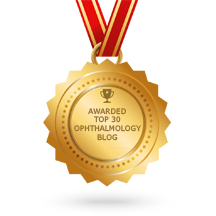
Diagnostic Criteria in Ophthalmology
MARFANS:
2010 revised Ghent nosology
The 2010 Revised Ghent Nosology for Marfan syndrome relies on 7
rules as indicated below:
In the absence of family history:
In the presence of family history:
- AND after TGFBR1/2, collagen biochemistry, COL3A1 testing
if indicated
- other conditions/genes will emerge with time
Diagnostic Criteria --
Scoring of Systemic Features
Feature
|
Value
|
3
|
|
1
|
|
2
|
|
1
|
|
2
|
|
1
|
|
2
|
|
2
|
|
2
|
|
1
|
|
1
|
|
1
|
|
1
|
|
1
|
|
1
|
|
1
|
· Modified diagnostic criteria for VKH syndrome
In complete VKH, criteria 1–5 must
be present.
In incomplete VKH, criteria 1–3
and either 4 or 5 must be present.
In probable VKH (isolated ocular
disease), criteria 1–3 must be present.
1 Absence of a
history of penetrating ocular trauma
2 Absence of other
ocular disease entities
3 Bilateral
uveitis
4 Neurological
and auditory manifestations
5 Integumentary
findings, not preceding onset of central nervous system or ocular disease, such
as alopecia, poliosis and vitiligo
Diagnostic criteria for cryptophthalmos syndrome
For diagnosis of
cryptophthalmos syndrome, patients must have at least two major criteria and
one minor criterion, or they may have one major criterion and four minor
criteria.
Major criteria
1.
Cryptophthalmos
2. Syndactyly
3. Abnormal
genitalia
4. Sibling with
cryptophthalmos syndrome
Minor criteria
1. Congenital
malformation of the nose
2. Congenital
malformation of the ears
3. Congenital
malformation of the larynx
4. Cleft lip
and/or palate
5. Skeletal
defects
6. Umbilical hernia
7. Renal
agenesis
8. Mental
retardation
DIAGNOSTIC CRITERIA FOR NEUROFIBROMATOSIS TYPE 1
THE PATIENT SHOULD HAVE TWO OR
MORE OF THE FOLLOWING:
six or more café-au-lait spots
each 1.5 cm or larger in
postpubertal individuals
each 0.5 cm or larger in prepubertal
individuals
two or more neurofibromas of any
type or one or more plexiform neurofibroma
freckling in the axilla or groin
optic nerve glioma
two or more Lisch nodules of the
iris
a distinctive bony lesion
dysplasia of sphenoid bone
dysplasia or thinning of long bone
cortex
a first-degree relative with
neurofibromatosis type 1
Graves' ophthalmopathy
In 1995, Bartley and Gorman
proposed diagnostic criteria for Graves' ophthalmopathy as eyelid retraction
with objective thyroid dysfunction, or either eyelid retraction or objective
thyroid dysfunction in association with exophthalmos, optic neuropathy, or
extraocular muscle involvement.
Neuromyelitis optica (NMO)
• optic neuritis (uniJ ateral or
bilateral)
• myelitis
• plus at least 2 of t h e following:
• a contiguous spina l cord lesion
o n MRJ in vol ving 3 ver tebral segm ents or more
• a brain MRl no ndiagnostic forMS
• a positive NMO- IgG serologic
test
Criteria for the Diagnosis of Diabetes
- FPG >126 mg/dl (7.0 mmol/l). Fasting is defined as no caloric intake for at least 8 h.*
OR
- Symptoms of hyperglycemia and a casual (random) plasma glucose ≥ 200 mg/dl (11.1 mmol/l). Casual (random) is defined as any time of day without regard to time since last meal. The classic symptoms of hyperglycemia include polyuria, polydipsia, and unexplained weight loss.
OR
- 2-h plasma glucose ≥ 200 mg/dl (11.1 mmol/l) during an OGTT. The test should be performed as described by the World Health Organization using a glucose load containing the equivalent of 75-g anhydrous glucose dissolved in water.*
Recommendations for Glycemic, Blood Pressure, and Lipid Control for Adults with Diabetes
1. A1C
< 7.0%*
2. Blood
pressure < 130/80 mm Hg
3.
Lipids: LDL cholesterol < 100 mg/dl (<
2.6 mmol/l)
Glycemic Recommendations for Nonpregnant Adults with Diabetes
1.
A1C < 7.0%*
2.
Preprandial capillary plasma glucose: 70–130 mg/dl
3.
Peak postprandial capillary plasma glucose < 180
mg/dl
Diabetic Retinopathy Screening
ü
Adults with type
1 diabetes should have an initial dilated and comprehensive eye examination
by an ophthalmologist or optometrist within five years after the onset of diabetes (AAO and ADA).
ü
Patients with type 2 diabetes should have an initial and comprehensive eye
examination by an ophthalmologist or
optometrist at the time of diagnosis
of diabetes (AAO and ADA).
— Subsequent examinations for type
one and type two patients should be repeated annually by an ophthalmologist or optometrist who is knowledgeable
and experienced in diagnosing the presence of diabetic retinopathy and is aware
of its management.
Less frequent exams (every 2–3 years) may be considered with
the advice of an eye care professional in the setting of a normal eye exam.
Examinations will be required more frequently if retinopathy is progressing
(ADA).
ü
When planning pregnancy, women with preexisting diabetes should have a
comprehensive eye examination and should be counseled on the risk of
development and/or progression of diabetic retinopathy. Women with diabetes who
become pregnant should have a comprehensive eye examination in the first trimester and close followup
throughout pregnancy and for one-year postpartum.
Airlie House Classification
Seven
standard fields of 30° were described as the
Arlie House Classification and were used on the Diabetic Retinopathy Study
Protocol. This was slightly modified for the ETDRS to the Modified 7- standard
field protocol-35° and became the
standard protocol in fundus photography for diabetic retinopathy
This is a technique of taking a
series of photos, using the stereoscopic setting on the digital fundus camera.
All of these fields utilize a 35-degree field of view.
Field 1 is centered on the optic
nerve.
Field 2 is centered on the macula;
Field 3 temporal to the macula;
Field 4 superotemporally,
excluding the optic disc;
Field 5 inferotemporally,
excluding the optic disc;
Field 6 superonasally along the
arcades, excluding the optic disc; and
Field 7 inferonasally, excluding
the optic disc
Lamellar macular hole
Criteria for diagnosis of lamellar hole were as follows:
(1) an irregular foveal contour;
(2) a break in the inner fovea;
(3) separation of the inner from the outer foveal retinal
layers, leading to an intraretinal split;
(4) absence of a full thickness foveal defect with intact
photoreceptors posterior to the area of foveal dehiscence.
- compiled & published by Dr Dhaval Patel MD AIIMS
